Here are few thoughts about led lights, what are they, how do they work, why do we need them, and what to expect from them. There will also be a buyers guide, or should we say some advice about what types should you avoid purchasing. Led lights can be quite expensive, and electricity prices are also climbing, so you could end up saving or losing money, depending on your choices.
First of all what is LED?
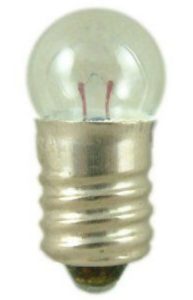
Traditional filament bulb
The LED comes from Light Emitting Diode, and it is a two-lead semiconductor. They were introduced in the early 60-s and quickly become a regular part of many electronic appliances.
First of all, they were replacing standard incandescent lights, that were usually bigger, had a shorter life, nonresilient to vibrations and most off all more power-consuming.
The incandescent light bulb or lamp is a source of electric light that works by incandescence, which is the emission of light caused by heating the filament. There is an extremely wide range of sizes, wattages, and voltages. But back to LEDs…

Red LED
At first, LED-s were used as signaling lights, and due to technical limitations, no one even considered them as main light sources. LED`s were available in yellow, red, and green color at first.
Then in the early 1990-s, professors Isamu Akasaki, Hiroshi Amano and Shuji Nakamura made the first blue LEDs.
Later this enabled a new generation of bright, energy-efficient white lamps, as well as color LED screens.
So, how to use LED? Basically you need DC power source (DC stands for Direct Current) matching voltage required by LED, and a resistor connected in serial is for over-current protection. It has two leads called Cathode or – and Anode or +.
You can notice that one of the leads on the left picture of the red led is longer. That is Anode and it is a way that manufacturer tells you “that lead goes to +” .There is also a flat spot on the bottom of the led casing where other lead comes out, and that is the way to tell you that that lead goes to -. Why two markings you would ask? Well in electronics there are a lot of wise guys with all different sorts of tools, and sometimes leads get a final touch by cutters, so without this second marking, you would end up not knowing what is + and what is -. Well even if you do not know anode and cathode it is not a trouble, as if connected wrong LED will not work, but won’t get damaged either. So you get a 50% chance to connect it right, and if there is no light coming out of it, just reverse the polarity.
Here on this next illustration is a drawing that explains how to connect it, and some main parts of it.
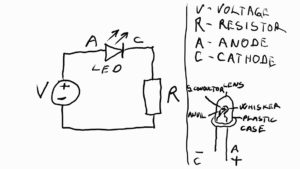
LEDs came to significant changes through time, from its most basic design to multi-color diodes, smd diodes, cobs (Chip on board). Here are a few examples:
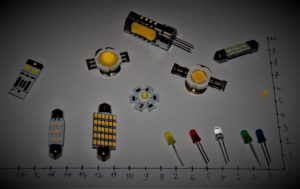
Now we finally came to a point where we could discuss some everyday lighting uses of LEDs.
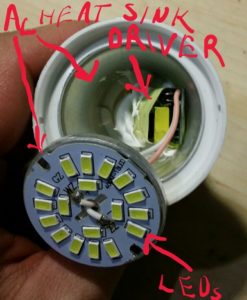
core parts of LED bulb
From now on we will be talking about Led or Led bulb as a complete device, not just a semiconductor. In this case, it is a bunch of Leds with power driver, external casing, heat sink, light dispenser, and screw base or whatever another type of connector. Once more, the device not just a semiconductor. On the left picture is an opened case of the led bulb and I labeled core parts. The board with LEDs is located on top of the Aluminium heat sink, which then spans thru most of the plastic body. The power driver converts 220V AC to DC voltage necessary for LEDs to work. This design is good for LEDs since they have some decent cooling, but the power driver is in trouble since by itself it is heating much, and LEDs are adding fuel to its flames by adding their heat to this closed casing. As a result, you soon get a power driver broken.

E27 base LED
Let’s observe markings from this E27 (Edison screw light base size 27) Led Bulb
AC – it means that it is for alternating current only
220V – it means that it`s operational voltage is 220 Volts so it is for Europe
50 Hz – it means that the frequency of this alternating current should be 50 Hz (You can ignore this)
7W – it means it`s power is 7 Watts. This is a smaller light bulb, and by my experience, it produces enough light for a smaller hallway, but we will come to this many times again.
Power Factor – explanation of my new friend “snakeskin” , regarding power factor:
The power factor has to do with the phase or timing of the AC current and how it is affected by the power supply. It’s kind of hard to describe because it involves real numbers (as in the square root of -1) and understanding how power companies generate and supply power. The important thing for you is it is not a rating of the efficacy of the fixture
Beam angle – first of all, beam angles are not used consistently by light bulb manufacturers. A wide beam angle ‘floods’ an area with light and is called a floodlight whereas a narrow beam angle is a ‘spot’ of light, hence spot light. The led bulb on the left picture is declared a BA of 180 degrees so it would be a floodlight.
6500 K – Color temperature in Kelvins – it means that it is between warm and cold white. Here is an example scale so you can get some basic idea:

The color temperature scale left is warm white right is cold white.
There are also some other things to observe when purchasing LEDs for your lighting:
CRI – A color rendering index is a quantitative measure of the ability of a light source to reveal the colors of various objects faithfully in comparison with an ideal or natural light source. TheCRI is determined by the light source’s spectrum. Typical LEDs have around 80 CRI, and 100 is an index of (daylight).
Lumen output – It is related to the brightness, which is the lumen output of an object in a given spectral region. Shorter to say more Lumens = more light.
Not many of the manufacturers are giving this information, but it is quite useful and important.
Dimmable – Old style: Led lights marked as dimmable are a little bit more expensive, let’s say if the non-dimmable led is 8 $ than same led but dimmable version would be 9 – 10 $. What does it mean? It means that you can manipulate its brightness by regulating circuit. One more important thing to remember is that dimmable LEDs can work in a non-dimmable circuit, but not vice versa. Do not use non-dimmable led in the dimmable circuit since it is not made for it. If you do it you may end up with some of these situations:
- Led has only two states depending on the position of a potentiometer on your dimmer, and that is on and off. No fine light regulation. Buzzing is optional.
- Led is making strange buzzing and won’t turn on.
- Led is blinking like crazy and buzzing.
- Led is dead and won’t work anymore.
One more thing to remember: If Led is not marked as dimmable, than for sure it is non-dimmable. Pay attention to what are you buying.
Dimmable – Updated information from our friend Snakesign :
There are two types of phase dimming available on the market. Old style triac dimmers cut the front part of the AC sine wave to reduce delivered power. This is called Triac, forward phase, or magnetic low voltage (MLV) dimming. Because this induces a large current in the power supply when you go from 0 to some high part on the sine wave a new more modern dimmer was created. This is trailing edge, reverse phase, or electronic low voltage (ELV) dimming. It cuts out the backside of the sine wave to reduce delivered power. LED’s will respond differently to both types of dimmers. There is also a lot of difference between a shitty $10 dimmer from Home Depot and a $75 dimmer from Lutron, even in the same dimming class. There is also some difference depending on how heavily the line is loaded. So compatibility has to be determined on an almost case by case basis.
Some wattage tests, pricing, and overall experience:
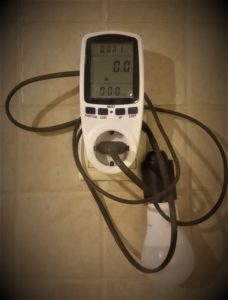
Power Meter Energy Monitor
First of all an explanation for testing that I did. I wanted to test some basic things, like brightness, rated power, durability, and overall looks.
Some of those I tested by measuring, and some by my own subjective observations.
I did not have a lumen output meter so my comments about brightness are subjective and I offer them as they are.
For power measuring, I used Floureon Power Meter Energy Monitor and a piece of power cord with an E 27 screw base.
Idea was to compare some manufacturers, to get some idea about best buy products, and at the end to come up with some useful advice.
Here is my friend Snakesign`s addition to give some clarity and avoid misguidance :
There are two important factors to the “brightness” of any source. One is the total lumen output, and the other is center beam brightness. The former is a measure of the total flux of the lamp, the latter is a measure of how bright the center of the beam is. The units are Lumens/Candela and Lux/Foot-Candles. Center beam brightness becomes more important than total lumen output as the beam angle becomes tighter. Think about a tight spotlight, any high angle light being scattered by the bulb is not really useful, so total lumen output is somewhat irrelevant compared to the punch at the center of the beam.
As for testing brightness without a meter you should look at this article: Measured vs Perceived
The human eye makes constant adjustments for chromaticity and brightness. It is also capable of a very high dynamic range. So a small change in chromaticity or brightness will often time be imperceptible.
Case 1.
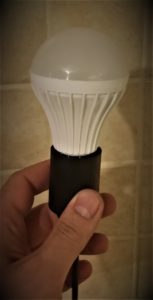
5W 2.9 $ at Banggood

1.3 W power consumption measured
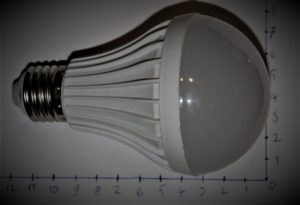
12 x 8 Cm in size
Here is 5W Led by unknown manufacturer purchased on banggood store for 2.9 $. I have in my possession around 10 of them for more than one year. From that number 2 of them stopped working permanently and another 5 I managed to repair by replacing a capacitor that literally exploded. So seven out of ten could be presumed dead after one year of use. They were in different places with different temperatures, different working time, etc. Interesting thing is that even declared as 5 W this LED’s consumption is only 1.3 W . Brightness produced is too little to have it alone in any size of the room but two of them combined are ok for small places.
It looks and feels like cheap product and I would suggest avoiding it.
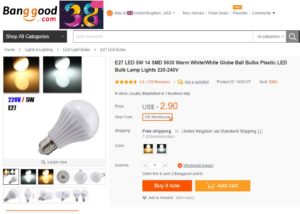
Banggood screenshot
Case 2.
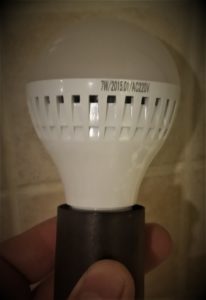
7W 4 $ at a local store
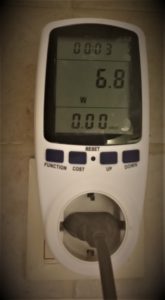
6.8 W power consumption measured
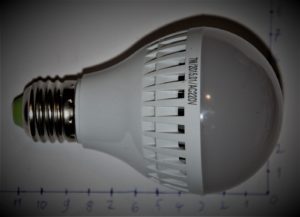
11 x 7 cm size
Here is 7W Led by unknown manufacturer purchased in some local store for 4 $. I have in my possession 6 of them for more than half a year. From that number 2 of them stopped working permanently and the rest of them are doing fine. I was not able to fix them, or it would be more precise to say it was not worthy of it. The driver inside provides 300 V DC and there are literally dozens of SMD chips on the board. They are all connected in series so if one stops working all of them do the same.I did not have the nerves to measure one by one to figure out where is the problem. They were in different places with different temperatures, different working time, etc. Declared and measured Wattage is ok, this manufacturer did not lie. Brightness produced is enough for a closet or small hallway or even smaller room.
It looks and feels a little better than Case 1. I would call purchasing of this LED the necessary evil, on the argument of working / dead ratio that is 4 / 2 out of 6.
Case 3.
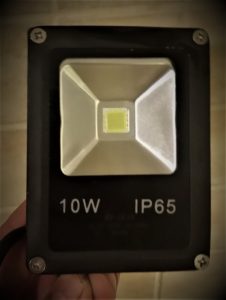
10 W reflector 7 $ at a local store
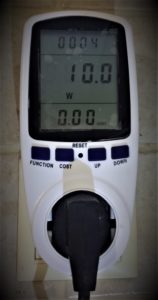
6.8 W power consumption measured
Here is 10 W Led by unknown manufacturer purchased in some local store for 7 $. I have in my possession 5 of them for a year. All of them are still working fine and I did not have any problems. I use them as backyard lights and they were on from -15 to + 30 degrees Celsius. Declared and measured Wattage is ok, this manufacturer did not lie. Brightness produced is great for such a small reflector.
It looks fine and feels excellent, and does a great job. I would definitely recommend it.
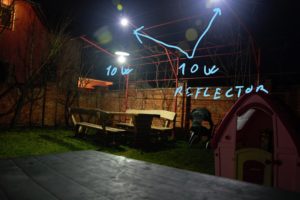

Here are pictures of my backyard with combined 4x 10W reflectors and 2 x 10 W Led bulbs combined on two sides.
This was a cloudy night and almost no external light is coming in. Backyard is 14 x 12 meters and on the second picture is a real see experience.
All this light comes from 60W of LEDs.
Case 4.
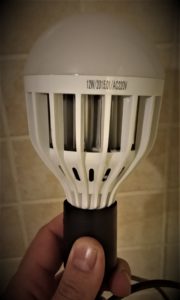
12 W 6$ purchased at a local store
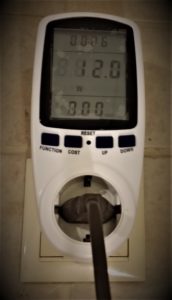
12 W power consumption measured
Here is 12W Led by unknown manufacturer purchased in some local store for 6 $. I have in my possession 2 of them for a few months. Both of them are still working fine. Declared and measured Wattage is ok, this manufacturer did not lie. Brightness produced is ok for normal 4×5 room, and I would say that I`m quite happy with them if we disregard the looks. This is the ugliest light bulb that I ever saw in my life. But on the other hand, constructors did their job very well since this is the only LED bulb I have that is not too hot to hold in a hand when it is on. I would expect them to last long, or I at least hope so.
It looks terrible, feels excellent, and does a great job. I would definitely recommend it if its appearance is something that you can live with.
Case 5.
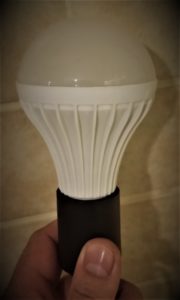
12 W 3$ purchased at Banggood store
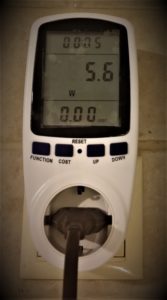
5.6 W power consumption measured
This is the same piece of crap like in Case 1. but with little more power.
The conclusion is the same, avoid it.
Case 6.
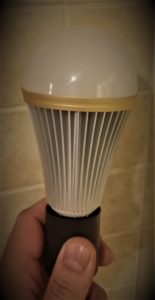
27 W 11.2 $ purchased at eBay
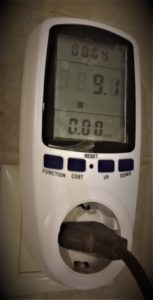
9.1W power consumption measured
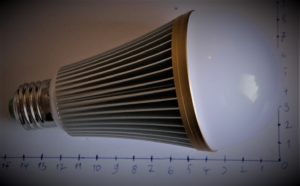
15 x 8 cm in size
Here is some serious dimmable 27W declared Led by Lemon-best manufacturer from China, purchased on eBay for 11.2 $. I have in my possession 4 of them for 2 years. Two of them are still working fine. Declared and measured Wattage is: 27 declared – 9.1 measured, so this manufacturer lied big numbers. Brightness produced is ok for the normal-sized room, and I would say that I would be happy with it if we disregard the fact that in two years 2 of them drop dead. The design and quality of materials used are great, but there is a problem with power drivers since in both cases they were the reason bulb stopped working.
It looks fine and the amount of light produced is ok if we disregard the fact that it is declared as 27 W. I would definitely recommend it if there was not a fact that in two years 2 out of 4 stopped working and they cost 11.2 $.
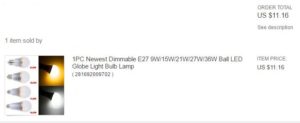
eBay screenshot
Case 7.
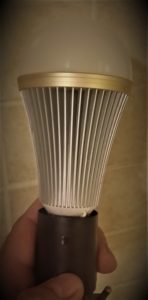
36 W 12.5 $ purchased at eBay
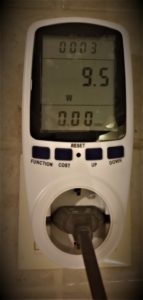
9.5 W power consumption measured
Had 2 of them for 3 years, one stopped working after the first year.
The rest is the same as in Case 6. this was also a little bit more expensive.
Case 8.
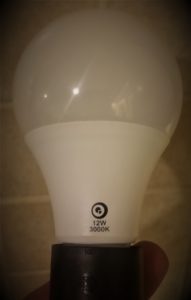
12 W 6 $ purchased at eBay
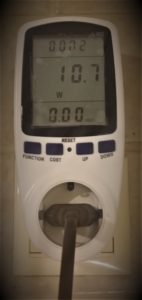
10.7 W power consumption measured
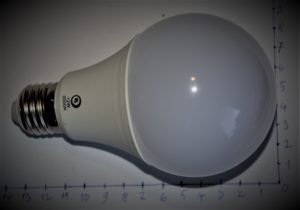
14 x 8 cm in size
Here is some great looking 12 W declared Led by Digoo manufacturer from China purchased on eBay for 6 $. I have in my possession 8 of them for 2 years. Four of them are still working fine. Declared and measured Wattage is: 12 declared – 10.7 measured, so this manufacturer did not lie too much. Brightness produced is great for normal-sized room, and I would say that I would be happy with it if we disregard the fact that in two years half of them drop dead. The design and quality of materials used are great, but there is also a problem with power drivers since in all cases they were the reason bulb stopped working. Never had a broken led chip in any of them. I`m still trying to find power drivers to repair broken ones but had no luck. I tried 20-watt drivers but the voltage was to low so I had to bypass 4 LEDs, so I got them working but with less intensity. The irony is that new 20 watt drivers worked for a few months and drop-dead also. I`m now waiting for some new drivers to come and I think they will do the job regarding voltage, but for the life span, I`m not so sure.
It looks great and the amount of light produced is great and if there was no fact that half of them stopped working during the first year of service it would be the best-led bulb I ever had. I would definitely recommend it if there was not this fact that it has a problem with the driver. A few of these I have installed outside the house, in the garage, and on the balcony and never had the problem with them. I`m quite sure now that they have a problem with overheating. So if you plan to use them on temperatures lover than let`s say 25 degrees Celsius, they will do the job!
Case 9.
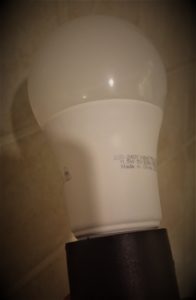
11.5 W 8 $ purchased at a local store
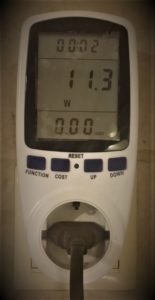
11.3 W power consumption measured
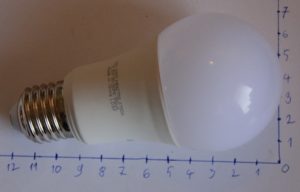
12 x 7 Cm size
Here is 11.5 W Led coming from Osram itself, purchased at a local store for 8 $. I have in my possession just one piece for two months. It is still working fine and looks like it is not overheating so it`s life span could actually belong. Osram did not lie about wattage, and brightness produced is a little bit less than expected for this wattage. 2700 K is a little to dark yellow for my taste, but it works fine for now on and I`m using it in my hallway. The quality of materials and made is fine, the design is also nice, so if its life span proves good, this would definitely be a highly recommended product.
Case 10.

Compact fluorescent lamp (CFL) 15 W 8 $ purchased at local store
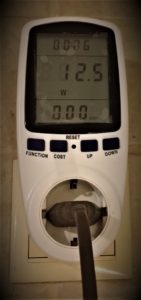
12.5 W power consumption measured
Just for comparison Here is 15W CFL coming from Osram, purchased at a local store for 8 $. I have it in my possession for three years. It is still working fine, but I replaced it with led and left it as a backup. Osram did not lie much about wattage. You must know that as CFL heats up, it produces more and more brightness, and measured power comes near to 15 Watts after it is turned on for a few minutes. Brightness produced is great for this wattage. The thing you must now about CFLs is that they are almost as efficient as LEDs, but there is one other thing that you should keep in mind. CFLs contain toxic mercury which complicates their disposal, and you should also take care when disposing of it. If you broke it, do not touch anything without gloves. The quality of materials and made is fine, the design is also ok for this type of the light bulb, so if LEDs were not invented this would definitely be a highly recommended product. Just to mention that GE ( General Electric) is stopping the production of domestic CFL lamps in favor of LEDs.
Case 11.
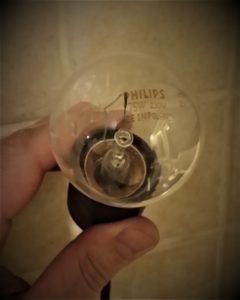
Traditional filament bulb 75 W made by Phillips, purchased at a local store for 0.5 $.
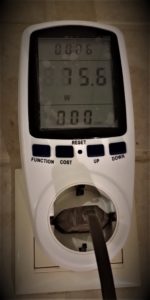
75.6 W power consumption measured
This case is only for the sake of observation and comparison.
This is Philips 75 W traditional filament bulb.
I will not comment on it much, I would just, for now, say that it emits the same amount of light like 11.5 W Led, or 15 W CFL.
Case No. | Light Bulb type | Rated Power in Watts | Produced amount of light |
11 | Traditional filament bulb | 75 | 100 |
| 10 | CFL 15 W | 15 | 100 |
| 9 | LED | 11.5 | 100 |
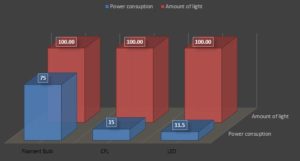
Power differences chart
I chose these three cases for this example since all three light sources produce almost the same amount of light, but there is a difference in energy needed for it.
That is why it is a great example of energy saving.
Now the conclusions :
- I spent more than 200 $ during the last 3 years on led lights. I changed around 30 of CFL-s and incandescent bulbs, but for the sake of simplicity, let’s say that I replaced 30 of good old incandescent bulbs rated to 100 W with LEDs. Again for the sake of this story, let’s assume that all of the LEDs are 10 W and that 1/3 of lights were turned on for 3 hours every day. So it is 10 times 3 times 100 W, and it equals to 3KW of energy every day spent just for lights. Since it is 30 days in one month I was spending 90 KW of energy for lighting monthly. Let’s say that one KW costs 7 cents, it comes to 6.3 $ of electricity monthly or 75.6 $ yearly for a lights. In case I had all LEDs it would be 63 cents monthly or 7.56 $ yearly. See the difference? We are talking about 68 $ of difference in real money for one year depending on what type of lighting you use.
To avoid confusion about a number of light sources in this example that I stated as 30, I`m talking about 2 apartments house with garage, front and back yard. You can do the math with your own surroundings.
One more aspect of this is that using LEDs you are spending less energy, and less energy means less pollution, so choosing the light type also has an environmental impact. If more people start buying LEDs, their prices will go down, manufacturers will also stop producing CFLs and other types of light sources that are not so environmentally friendly. So, come on, come to the green side. - CFLs contain Mercury – take care if you broke it.
They also need some time to heat up. When you turn on CFL it`s producing less light at the beginning than after few minutes, so I would suggest avoiding it on places where it is constantly switched on and off, like hallways, bathrooms, etc. Another thing is that frequent on / off also reduces its lifespan. you should also, try to avoid CFL-s on low temperatures T < -5 C since gas inside never gets a chance to heat up to proper temperature, and the amount of light produced can be much less than at room temperature. These are things useful to know about CFL-s. - When you plan to go purchasing LEDs first of all watch for these characteristics if they are displayed on the light Bulb or its box :
– Wattage: for main light sources avoid anything less than 10 W in rooms or 7 W in hallways.
-Lumen output: for main light sources avoid anything less than 1000 Lumens in rooms or 750 Lumens in hallways.
-Dimmable and non-dimmable: Pay attention to what are you buying, if you want to control its brightness, buy those marked as dimmable.
-Color temperature in Kelvins: figure out the light color that suits your eye. If you are gonna combine different LEDs try to get the ones with the same light temperature. I personally like warm white light for in house lighting (3500 – 4000 K ), and cold white light for outside (6500 – 7000 K ).
-Before purchasing, ask about warranty for the LEDs you intend to buy, in most countries 6 months to 2 years warranty is mandatory for all-electric appliances, but in some cases, different LEDs may have different warranty time. In practice, it means that it is better to spend a few bucks more for a product that has 2 or more years’ warranty compared to cheaper few month’s warranty products. If you are purchasing LEDs with some other stuff ask the cashier to separate LEDs from the rest of your stuff so you can have a separate receipt for them and save it somewhere. Later in case you need to claim the warranty you will need the receipt. - If you are purchasing LEDs online be aware that sometimes you can not be sure about technical data, and that in most cases you can consider LEDs purchased online as products without warranty. Even if it is stated that the warranty is 1 year, for example, you will be asked to send a broken item to a seller in order to claim a warranty. That will sometimes cost you more than the product itself so keep it in mind.
- Better stores have the showroom for lighting products, so you can try out the lights, see how do they look and perform. Most of all you can see how the light color looks like. I highly suggest that you use this possibility when shopping for LEDs.
- One more important aspect is that LEDs can work on lower voltages, so they are perfect for Off-the-grid systems. You can find countless LED types that work on 12 V, which are ideal for running on car batteries.
That makes them perfect for camping, boats, and situations where you really need to take care of the energy that you spend. - Got sick of changing light bulbs in your car? There are now all LED base sizes available. Change filament light bulbs with LEDs, but buy quality ones and I promise you, you will never have to change them again. If you buy those cheap crap LEDs you will throw your money away. I would still avoid LEDs as main car lights, long or low, I think that they still are not ready to play that role.
Word of the author:
Well it is time to end this story, I hope you find it useful, interesting, and if you have any comments, thoughts, or simply want me to test something, please leave a comment and we will get in touch.
I offered here my experience and knowledge with hope to make things easier, faster and more simple for you. So I wrote this article as personal as it could be, since you see the world thru your eyes and most important place in the world is your home, and I hope that now, with some gained knowledge you will be able to see your home in new even more beautiful light with help of LEDs.
Once again thank you for reading.

🙂
P.S.
Many thanks to a great reader, contributor, and friend Mr. Snakesign.

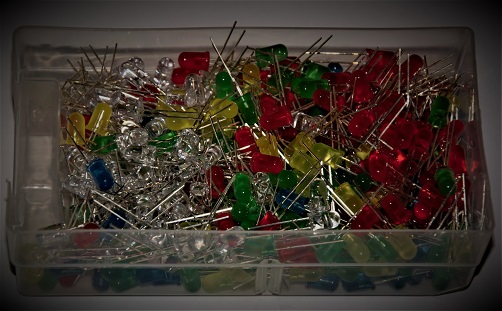
4 comments
Interesting point of view , but only for a cheap lights, it would be nice to have some GE or Phillips modes tested also……
Agreed, it shall be done soon, thanks for the comment.
Thanks, great article.
Thank you for reading! Cheers 🙂